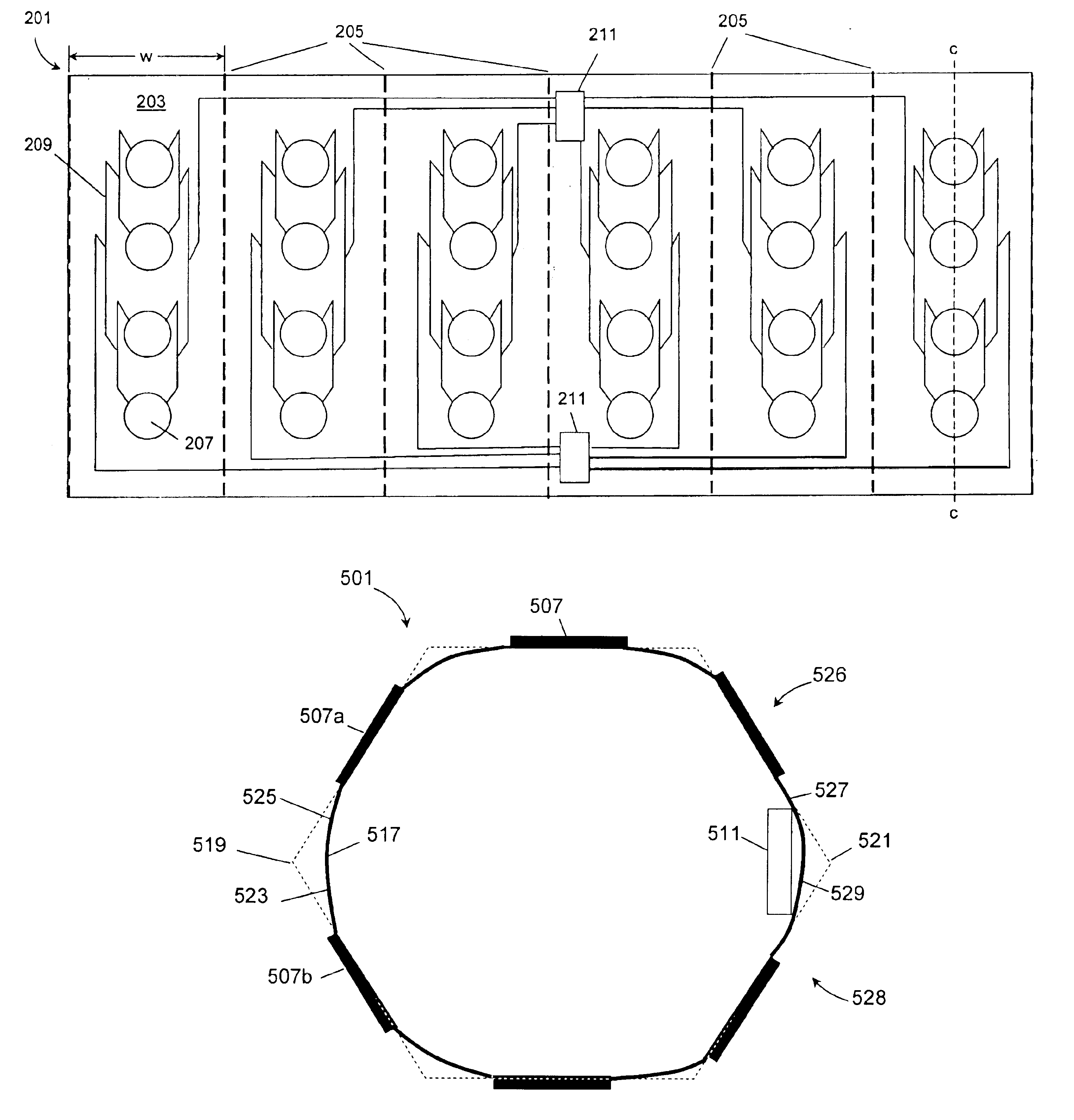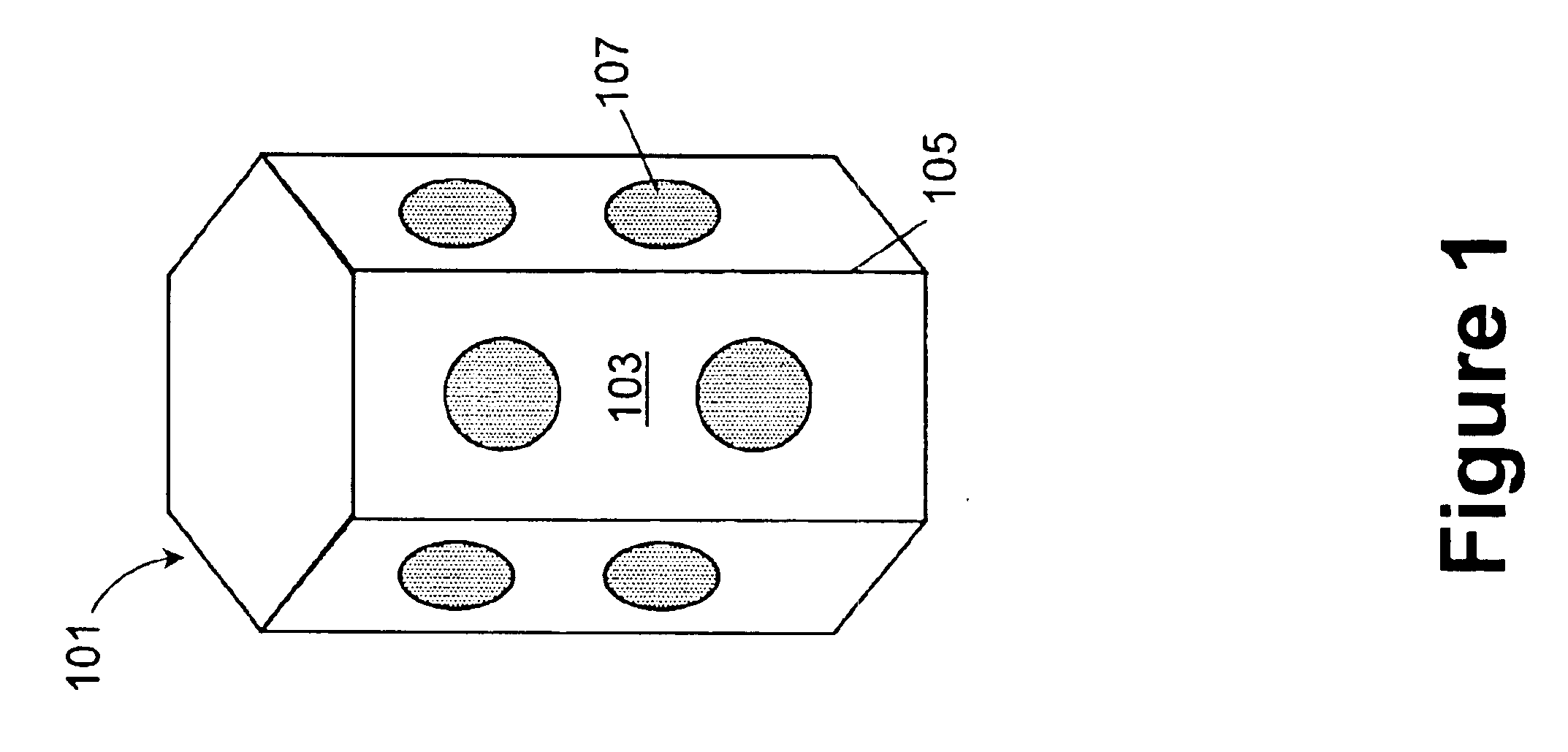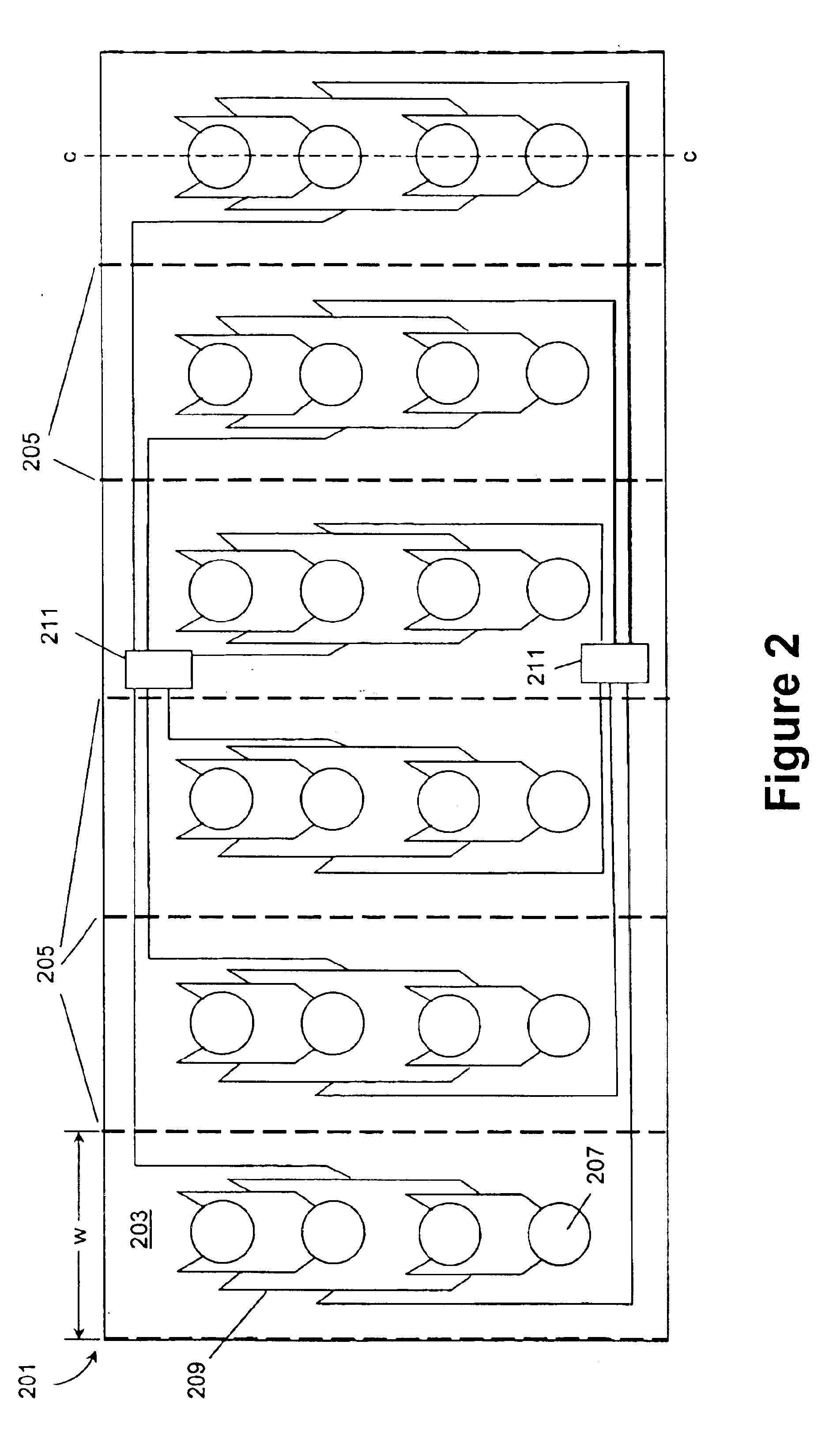Offsetting patch antennas on an ominidirectional multi-facetted array to allow space for an interconnection board
a patch antenna and interconnection board technology, applied in the field of patch antenna arrays, can solve the problems of imposing mounting stresses on the antenna array and tower, reducing the width requirements of the facet, and avoiding any discontinuity in rf propagation
- Summary
- Abstract
- Description
- Claims
- Application Information
AI Technical Summary
Benefits of technology
Problems solved by technology
Method used
Image
Examples
Embodiment Construction
In the discussion that follows, like reference numbers refer to like elements in similar figures. Referring to FIG. 1 there may be seen an example multi-section antenna array 101 in perspective view. The array is formed by a number of facets 103, the total quantity being a function of the particular application but typically comprising six or eight in total. The facets are arranged with abutting sides 105 which form edges or corners of the resultant polygonal tube. The facets need not be separate units, but instead may be formed on a single or convenient number of sheets which are effectively creased or folded at the edges of the facets. Located upon the facets are the patch antenna elements 107 which radiate or receive the requisite radio frequency (RF) signal. As is generally known, the patch antenna elements 107 have an associated ground plane (not shown) located beneath the patch antenna element, and separated from the conductive surface of the patch antenna element by a dielect...
PUM
 Login to View More
Login to View More Abstract
Description
Claims
Application Information
 Login to View More
Login to View More - R&D
- Intellectual Property
- Life Sciences
- Materials
- Tech Scout
- Unparalleled Data Quality
- Higher Quality Content
- 60% Fewer Hallucinations
Browse by: Latest US Patents, China's latest patents, Technical Efficacy Thesaurus, Application Domain, Technology Topic, Popular Technical Reports.
© 2025 PatSnap. All rights reserved.Legal|Privacy policy|Modern Slavery Act Transparency Statement|Sitemap|About US| Contact US: help@patsnap.com



